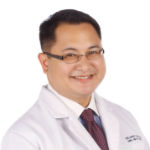SUMMARY
This is AI generated summarization, which may have errors. For context, always refer to the full article.

MANILA, Philippines – One of the best perks of being a doctor is knowing who the best doctors are. I am astounded, time and again, on how little attention people give to the expertise and credentials of the doctor(s) they choose to take care of them and their family.
When you have your car fixed, you go to great lengths to find a reputable mechanic or service center. When you buy electronics, you read reviews and compare brands before you choose the best deal. When looking for a school for your children, you do a lot of research before settling on the top choice. However, when it comes to health, most people choose their doctors either by convenience (who is available), or by cost (does he/she charge a lot?).
Your health and the health of your family are of paramount importance, and your choice of physician should not be left to chance. Here are secret tips that physicians use to help find the right doctor for them or their loved ones:
1. Medical school is important
A strong academic background is important, but this is harder to evaluate than it seems. The best doctors have a solid foundation of theoretical medicine and may have specialty and subspecialty training on top of the basic medical doctor education.
A lot of people think that after a doctor gets his medical degree, he can pretty much treat any disease there is, whether it is a common cold, or a complicated illness like cancer. With the exponential explosion of medical knowledge, it becomes harder and harder to keep up with the latest findings in the field. To better understand medical training, here is a breakdown of how doctors are educated:
Four years of “pre-med” which is a bachelor of science course in college with a specified minimum requirement of certain units to qualify for medical school. There is one program at the University of the Philippines which is a 7-year medicine track that distills this “pre-med” into 2 years.
Four years of medical school proper plus one year of medical internship. During this period, medical students learn the foundations of medical science and rotate through the different specialties and subspecialties. Because physicians learn the basics in medical school and the entry requirements vary, your doctor’s medical school is a major determinant for competency.
While ultimately, further training (see specialty and subspecialty training below) can trump a weaker medical school, I would still pick a doctor from the better known medical schools over someone from a lesser known medical school. These schools include (but are not limited to) the University of the Philippines, University of the East, University of Santo Tomas, Far Eastern University, Ateneo, De La Salle and other established medical schools.
After graduation from medical school (or in the case of UP, prior to graduation), one then has to undergo medical internship in a hospital, once again going through the different specialties to further hone diagnostic and therapeutic skills. After internship, one can then take the medical licensure examination given by the Professional Regulatory Commission. Upon passing the medical boards, if the physician chooses to begin practicing medicine, he/she is referred to as a general practioner.

2. Understanding specialties and subspecialties
General practitioners (GPs) are just that, they can practice all aspects of medicine from pediatrics, to adult medicine, to minor surgery and in far-flung areas, even obstetrics and gynecology. Without a doubt there are excellent general practitioners especially in the boondocks where they need to do everything.
General practitioners are equipped to handle the common cold, influenza, hypertension, mild arthritis, and daily aches and pains. When illnesses require complicated, prolonged, or involve surgical or interventional procedures and there is an option to refer to a specialist, a good general practitioner usually will direct the patient to the appropriate type of specialist.
My personal opinion is that a newly minted GP may be too “green” to practice medicine adequately immediately upon graduation from medical school. There is a learning curve for clinical practice and specialty training allows for this to happen under supervision, while young GPs will have to learn on real patients. If you choose a GP, go for the older, more experienced ones rather than one who is just out of medical school.
For a lot of physicians, entering further training is desirable in order to get more clinical experience and skill. The next step is specialty training, or what is known as residency.
Physicians taking specialty training are known as residents, which is a throwback to a time when specialty trainees literally had to live in the hospital in order to fulfill their clinical duties. This has since improved with the availability of pagers and cellular phones.
Specialty programs include the specialties of internal medicine (or internists), pediatrics , family medicine, surgery, ophthalmology, otorhinolaryngology, pathology, radiology and other disciplines. Note that some of these specialties (pathology and radiology) do not see patients in clinics, so if you have a physician friend who is a pathologist or a radiologist, please do not ask them about your chest pain or tummy ache unless you want a biopsy or a CT scan right away.
Residency can take anywhere from two to seven years, with most going for about 3 years.
When a resident graduates, he/she is known as a specialist. He/she then takes a specialty board exam which certifies that a doctor is competent in the specialty. Specialists who have passed their board exam are known as diplomates. For instance, internists are usually certified by the Philippine Specialty Board of Internal Medicine, which is the specialty board of the Philippine College of Physicians (PCP).
Physicians are not required to pass specialty boards in order to call themselves specialists, and so it is important that one knows whether a doctor has been board-certified in his specialty. An easy way to spot this is if, aside from the medical school diploma, the doctor displays a diploma from the specialty society in his office.
Another way is to look at the letters after a physician’s name. DPCP stands for Diplomate of the Philippine College of Physicians, which tells you that doctor passed the PCP boards, while FPCP stand for Fellow of the PCP. The term “fellow” in this case is an honorific title which is different from that used in subspecialty training (see below) and is only given to diplomates who have fulfilled additional requirements.
Some physicians may have trained outside the country and so may not have these letters, or different letters, after their name. When in doubt, it is best to do a bit of research in order to find out if your doctor is board-certified in his/her specialty, or ask the doctor outright. Personally, most doctors will only go to a diplomate or fellow with board certification since not having this credential may be a red flag in terms of competency in the specialty.
Subspecialties are further training focusing on a region or system of the body (e.g. cardiology, endocrinology, pulmonary medicine, colorectal surgery), specific disease types (e.g. infectious diseases, rheumatology, oncology, plastic surgery, transplant surgery). These usually take two to three years to complete.
A specialist who is undergoing subspecialty training is known as a fellow (specifically a clinical fellow, which is different from the honorific fellow mentioned above), and the program is known as a fellowship. After a fellow graduates, he/she also takes subspecialty boards similar to the specialty boards, and becomes a diplomate and subsequently (honorific) fellow of the subspecialty society.

3. Picking a primary care physician
The first doctor most patients see (or should see) is some kind of primary care doctor and these usually are internists (for adults), pediatricians (for children), or family physicians (for either). These primary care doctors monitor a patient’s health even if they are feeling well, give preventive care such as vaccines, and do screening for ailments such as diabetes or anemia. They can treat common ailments such as hypertension, urinary tract infections, and respiratory tract infection and refer to subspecialists (see below) for further care or when the patient is not responding to usual treatment.
A lot of subspecialists continue to practice as specialists/primary care providers, and so if someone has a chronic illness then the choice of a primary care provider with a subspecialty in the chronic illness makes sense.
For example, if one has diabetes, an adult endocrinologist (subspecialty of internal medicine) who is also practicing as an internist is ideal. If a child has asthma, then a pediatric pulmonologist (subspecialty of pediatrics) is appropriate. If you have no chronic illnesses and are relatively young, an internist or family medicine practitioner is absolutely fine.
As a bonus, if you pick the right internist/primary care provider using these guidelines, these doctors usually refer to very good subspecialists, should you need one. However, you should still do your homework for these subspecialists in order to make sure they are a good fit to you.
4. Academic affiliations are a big plus
Doctors who teach other doctors are among the best. The derogatory adage “those who can’t do, teach” is the complete opposite for medicine. After residency or fellowship, only the best trainees are invited to join the university or medical school as faculty.
Because of weekly and even daily conferences and interactions with colleagues and trainees, medical faculty are updated on the latest findings and treatments for diseases, and may have access to cutting-edge diagnostics and medications that non-academics might not know about.
In addition, the large case load and variety of patients seen in a university setting ensures a wealth of experience and first-hand knowledge of disease course and response to treatment. Some faculty may be co-investigators in international clinical trials that have access to experimental medications, which may not even be commercially available.
As a bonus, medical faculty tend to refer to other medical faculty. Because most medical faculty practice in both academic and private settings, you may find medical faculty even in private hospitals but you may need to do a little bit of research. The best part is that with internet search, it is easy to figure out who is affiliated with the best medical schools.
5. Call a friend
We are all human, and there are limits to our knowledge. When faced with a difficult case, the best doctors are never afraid to admit that they don’t know, and will seek the advice of colleagues who may have more specialized knowledge or experience. If they think a different specialty or colleague would better serve the patient, they will not hesitate to transfer care or refer for a second opinion.
Some of the most dangerous doctors are those who “experiment” on patients with potentially harmful treatment without establishing a firm diagnosis. For instance, one must never agree to cancer chemotherapy if there is no firm pathologic or tissue diagnosis.
I have heard the story of a patient who was given chemotherapy based on enlarged lymph nodes from a CT scan, without a biopsy, and he actually had tuberculosis. The cancer chemotherapy ended up making the tuberculosis worse, and the patient died.
While a “trial and error” approach may sometimes be necessary for some diagnostic dilemmas, the adage “primum non nocere” or “first, do no harm” is the guiding principle for the best doctors.
6. Treat the patient, not the disease

When I was in medical school, we had a patient with an extremely large breast mass that some of my colleagues inappropriately referred to as a tumor with a patient attached. The best doctors are always patient-centered and treat human beings, not laboratory or radiologic findings.
An important part of taking care of patients is eliciting the “chief complaint” which is the reason why patients came to seek medical help in the first place. There was an extremely intelligent doctor who did a perfect job of treating a patient’s pneumonia, but forgot to address the chest pain from the pneumonia and the patient came away dissatisfied.
On the other hand, palliative care doctors never really cure a patient but are experts at prolonging what little life a patient has left, and more importantly, improving that remaining time. Doctors choose a doctor who is compassionate but professional, who treats the patient holistically, both symptoms and source of the illness.
7. A good doctor never solicits patients and never sells his own medicine
Good doctors let their reputations speak for themselves, by word of mouth. In fact, it is unethical to solicit patients according to the physician’s professional code of conduct. If someone approaches you with a “promotion” to see a doctor, that is a very big red flag.
Unethical doctors can end up doing ghost surgeries, charge exorbitant rates, and worse of all, give bad clinical care. Beware of doctors who write illegible prescriptions that only their own pharmacies can fill. Especially be wary of doctors who sell their own “concoctions” that are guaranteed to cure without disclosing the contents of those medicines. Manufacturing a drug and prescribing it is an inherent conflict of interest.
There are some far-flung areas such as in remote provinces where there is no choice but for the doctor to maintain the only reputable pharmacy available in order to make drugs available to their patients. In these cases, it is important that generic names of the medications dispensed be made available to the patients to give them a choice in case they wish to seek care elsewhere.
So there you have it. There are other factors that go into how physicians choose their doctors, such as friendship and a mentor-mentee relationship, but the above tips will go a long way in finding the very best medical care from the right physicians, and avoiding the bad ones. – Rappler.com
 Edsel Maurice T. Salvana, MD, DTM&H, FPCP, FIDSA is director of the Institute of Molecular Biology and Biotechnology at the National Institutes of Health, University of the Philippines Manila, and is an associate professor of medicine at the Philippine General Hospital. He is also adjunct faculty for Global Health at the University of Pittsburgh. He was selected as an Outstanding Young Scientist for 2010 by the National Academy of Science and Technology and was recognized as a TOYM in 2010 for medicine and social activism in HIV. He was selected as one of the Ten Outstanding Young Persons of the World in 2012 by JCI International for the national and international impact of his HIV advocacy. He practices infectious diseases medicine at the Philippine General Hospital, Manila Doctors Hospital and Medical Center Manila.
Edsel Maurice T. Salvana, MD, DTM&H, FPCP, FIDSA is director of the Institute of Molecular Biology and Biotechnology at the National Institutes of Health, University of the Philippines Manila, and is an associate professor of medicine at the Philippine General Hospital. He is also adjunct faculty for Global Health at the University of Pittsburgh. He was selected as an Outstanding Young Scientist for 2010 by the National Academy of Science and Technology and was recognized as a TOYM in 2010 for medicine and social activism in HIV. He was selected as one of the Ten Outstanding Young Persons of the World in 2012 by JCI International for the national and international impact of his HIV advocacy. He practices infectious diseases medicine at the Philippine General Hospital, Manila Doctors Hospital and Medical Center Manila.
Photos via Shutterstock (Doctor holding mobile, medical consultation, doctor with stethoscope, doctors walking down the hallway)
Add a comment
How does this make you feel?
There are no comments yet. Add your comment to start the conversation.